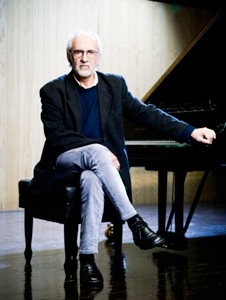|
|
>>Versão portuguesa |
| Candid, or the Pessimism ÁLVARO GARCÍA DE ZÚÑIGA |
2011.11.23 |
|
Before the performance, the composer had a meeting with the audience, during which, with great simplicity, he gave us some hints not only on the work and the ideas preceding it, but also about himself, his general musical ideas, his vision of the world and the present. This led him to define himself as a pessimist up to the point of emphasizing the last phrase cited in his work, from “The Book of Disquiet” by Fernando Pessoa, which tells us that “everything is null”. The work is developed primarily through interaction between writings by Ítalo Calvino, Jorge Luis Borges and Fernando Pessoa / Bernardo Soares, which were organized by the composer. According to his explanation in the pre-concert talk, these are texts, auto-reflexive ones, about the subject of writing, on which he began working around 2001, having this same libretto included in two electroacoustic versions, the first one presented in Porto in 2006 and the second one during the Música Viva Festival under the title “Ciclos de Conferências e Diálogos Imaginários”. The final work, as we could hear on November 19th at the São Carlos Theatre, is a joint commission of the Casa da Música, the TNSC itself. We do not know, if by coincidence, it marks the composer’s 60th anniversary, but we hope that these and other institutions will continue to develop a policy of commissions and our composers will not have to wait until their 60th anniversaries for their realization… “Every creator, in his or her work, transmits the restlessness” and “music is not enough”; in two accurate phrases and with lots of simplicity Pinho Vargas “explains”, in a certain way, the essence of his work; from there the fact to insist on the intense relation between music and texts and, undoubtedly, their treatment; the fact that there are three pre-recorded speakers, enables the “presence” of voice and nuances, in which it can be transmitted, compatible with the sonorous levels of a symphonic orchestra. For its part, the electronics figures as an instrument and in the listener’s perception it joins the orchestral device, as if in fact there was one more instrument. In this case there is no third sound structure besides the orchestra and voices. And this idea functions perfectly. Curiously, if the chosen texts regard and provide a reflection on the specificity of writing, the composer does not seem to depart from the same premise in the compositional act. The music presents itself to us as a functional block, on which the texts are supported, the eleven letters (I assume, without having counted them, that the text interventions were effectively eleven as referred to in the work’s title), having, in a way, a lot of “cinematography” and “sound illustration”. Still it is not for the illustration that, in this sense, the work is disarmingly simple, since it neither illustrates anything nor – I think – in the least tries to illustrate whatsoever, if one does not mean orchestral music containing a narrative weight supported by the texts. The result is a particularly candid piece of music, in which, and exactly because of that, the author’s pessimism passes aside leaving us with a sensation of a clear and well-structured work and – what is not simple at all, especially in the current aesthetics of our time – simple. |
|
 “Onze Cartas” (“Eleven Letters”) by
“Onze Cartas” (“Eleven Letters”) by